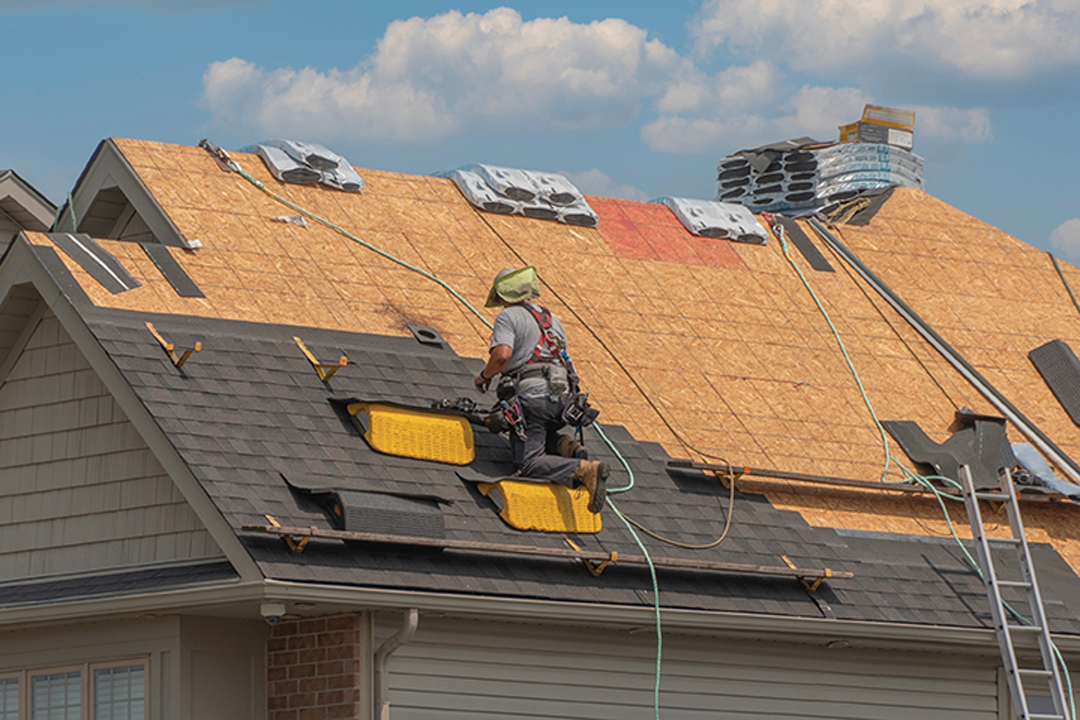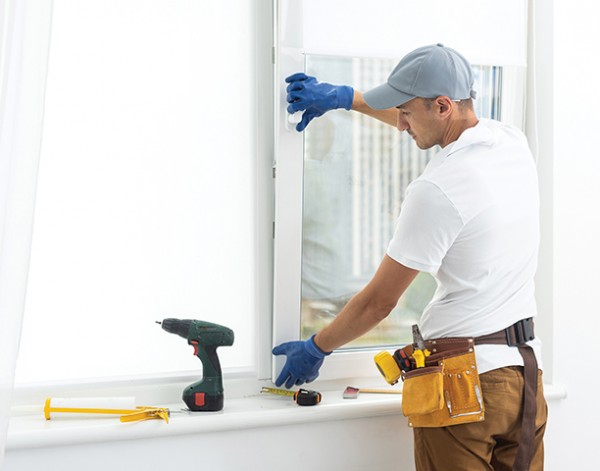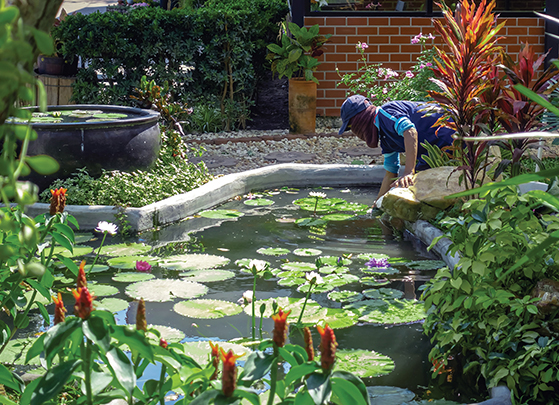A Step Ahead

With autumn's arrival, countless homeowners are looking forward to admiring the fall foliage and enjoying extended outdoor activities whether around the fire pit, the pumpkin patch or otherwise.
But the fall season also creates a great opportunity to get one's home ready to handle the harsher conditions that Old Man Winter brings. Winterizing your home should be top of mind for all homeowners, as it can solve problems in the short-term while also saving you lots of time, money and aggravation in the long term.
 Adam Parnes of Global Home Improvement acknowledges the importance of staying on top of a winter checklist and says that homeowners who don't regularly do so are tempting fate. "I think anyone who is winterizing their home is already ahead of the ball game," he says. "Upgrading insulation, re-caulking windows and cleaning gutters are some of the easier solutions to a safe home this winter."
Adam Parnes of Global Home Improvement acknowledges the importance of staying on top of a winter checklist and says that homeowners who don't regularly do so are tempting fate. "I think anyone who is winterizing their home is already ahead of the ball game," he says. "Upgrading insulation, re-caulking windows and cleaning gutters are some of the easier solutions to a safe home this winter."
House & Home spoke with various leaders in the home improvement industry to get a better understanding of the key areas to focus on when winterizing your residence. Whether making energy-efficient upgrades to the interior or making necessary repairs to the exterior that also help boost curb appeal, the fall season offers ample opportunity to rectify any issues now and give homeowners some reassurance for once winter arrives.
Energy Efficiency
Checking to see if one's HVAC system is in need of a tune-up is recommended by industry professionals. Annual service will ensure things are running smoothly and curtail rising energy bills that result from suboptimal operation.
Poorly insulated attic space can also be a major contributor to energy loss. According to the Department of Energy, a properly insulated attic can help slash you heating bill as much as 50%.
Another common contributor to energy loss is poorly sealed windows and doors. "Not only do older windows and doors not have updated thermal efficiency, but many of them have air leaks, which are just inviting cold air directly into your home," says Parnes.
Brian Iwano, founder and project manager with Blue Tree Builders, says it can be difficult for most people to tell if it's time to replace their windows if there's no clear and present physical damage.
"The obvious signs your windows need replacing are when the seal fails and air gets between the panes; and with older wood windows, when the wood becomes damaged. Aside from these examples, it can be difficult to notice air seepage during mild weather," he says.
 Roofing & Siding
Roofing & Siding
Replacing one's roof or siding can be a sizable expense and cause some homeowners to delay any major repairs or replacements for another season in hopes they can avoid any catastrophic issues while saving some money. But one major winter storm can change that equation and the result could be an even heftier out-of-pocket cost.
When looking to determine if your roof may be a candidate for either repair or replacement, one tell-tale sign is the appearance of leaks. But there are also other factors to consider, namely age. Is the roof 20-25 years old? If so, it's likely the shingles have or will soon start to curl and the adhesion to one another will become compromised.
"The most important thing to consider is what could happen if you don't replace it," says Parnes. "A leaky roof will cost you way more money in damage then the money you save by trying to wait one more year."
"This may seem obvious, but look for any damage that may have occurred from summer storms," adds Iwano. "It's pretty easy to look for missing shingles. This in itself isn't all bad, as the real waterproofing is maintained by the underlayments and other prep. However, missing shingles do leave your roof open to further wind damage, which would definitely cause bigger problems very quickly."
Danny Cenaj of Siar Construction says in addition to seeing missing or buckled shingles that are no longer lying flat, there are other noticeable changes you may recognize. "If one area is much darker than another part of the roof; that is one of the other signs that it may be time to get a roof inspection. Another thing would be if you are cleaning your gutters and you are able to see a lot of granules that have fallen from the shingles," he says.
If your roof is old or you are not sure it will last another winter, fall is actually the ideal time to have it replaced. In the summer when battling extreme heat and humidity, the shingles can occasionally become damaged during the installation process, something that is certainly avoidable thanks to fall's cooler temperatures.
"The fall is one of the best times of the year to replace the roof," affirms Cenaj. "Homeowners can make sure they get everything done right before winter, which gives them peace of mind that they will not have to contend with any issues."
Elsewhere on the exterior, Iwano points out that problems with siding usually occur at transition points either between trims or moldings, or aluminum capping. "Additionally, end pieces and tops commonly become loose, which also [could lead] to further wind damage. Again, like roofing, the real protection is in the prep. But you definitely want to mitigate any vulnerability as soon as possible," he says.
Chimneys
For those who enjoy lighting a fire inside the home during the winter months, fall is also the right time to have your chimney serviced, as a detailed inspection can help to uncover any potential hidden issues.
"Inspections will check for any cracks in the cement or the mortar or if there are any other problems, and you will be able to determine if the chimney will be good for the winter or not," says Cenaj.
At the very minimum, Cenja advises homeowners to have their chimneys cleaned before seasonal use. "Getting a chimney cleaned is something I would say is mandatory every fall before you start using your fireplace," he says.
Preparing Your Pond
It's important to know how to winterize a pond and prepare fish to withstand the harsh winter. Over a year, your pond will accumulate debris and organics such as leaves, twigs, grass clippings and fish waste. Left unchecked, decaying debris can release toxic gas and reduce oxygen levels. Removing this debris and replacing filtration systems with aeration kits and de-icers will help ensure oxygen levels stay as high as possible and provide aeration, ventilation and circulation throughout the winter months.
"When fall officially arrives, and the trees start losing their leaves, we often recommend netting your pond," says George Mihalchick of Ponds by George.
Fall netting is intended for collecting debris, and is often a choice to use for predator protection, which is why some pond owners even choose to leave the net in place until spring, but it is important to note that these nets are not designed to carry a heavy snow load, and should be removed in the winter before any snowfall.
"Once all the leaves have fallen, begin your fall pond care by removing any netting. Pond netting should be stored indoors to keep it safe from wear and tear due to heavy snowfall and ice," says Mihalchick.
As fall ends and winter approaches, plants will naturally fall into a dormant state. To winterize hardy plants, use your pruning tools to trim off dead foliage just above the soil. Removing debris that may have made it into the pond should also be removed. "Rotting leaves, twigs or dead aquatic plants will put stress on your pond's oxygen levels throughout the winter, which puts your fish at risk. I recommend removing leaves and debris from ponds and streams with the help of a hand net if possible," Mihalchick details.
Another way to keep fish safe when temperatures drop is with the help of aeration, and de-icers help to keep a hole open in the ice during winter months. "This prevents harmful gases from being trapped under the ice and allows oxygen levels to stay saturated in the pond. Or if your pond has a waterfall, leave it running, the movement will cause a natural opening," Mihalchick explains.
Resources
Blue Tree Builders
Cherry Hill, N.J.
(609) 240-3231
ExperienceBlueTree.com
Global Home Improvement
Serving Pa. and N.J.
(888) 234-2929
GlobalHomeInc.com
Ponds by George
Southampton, Pa.
(215) 396-7500
PondsByGeorge.com
Siar Construction
Garfield, N.J.
(973) 964-1777
SiarConstructionNJ.com
Published (and copyrighted) in House & Home, Volume 24, Issue 9 (September 2024)
For more info on House & Home magazine, click here.
To subscribe to House & Home magazine, click here.
To advertise in House & Home magazine, call 610-272-3120.
